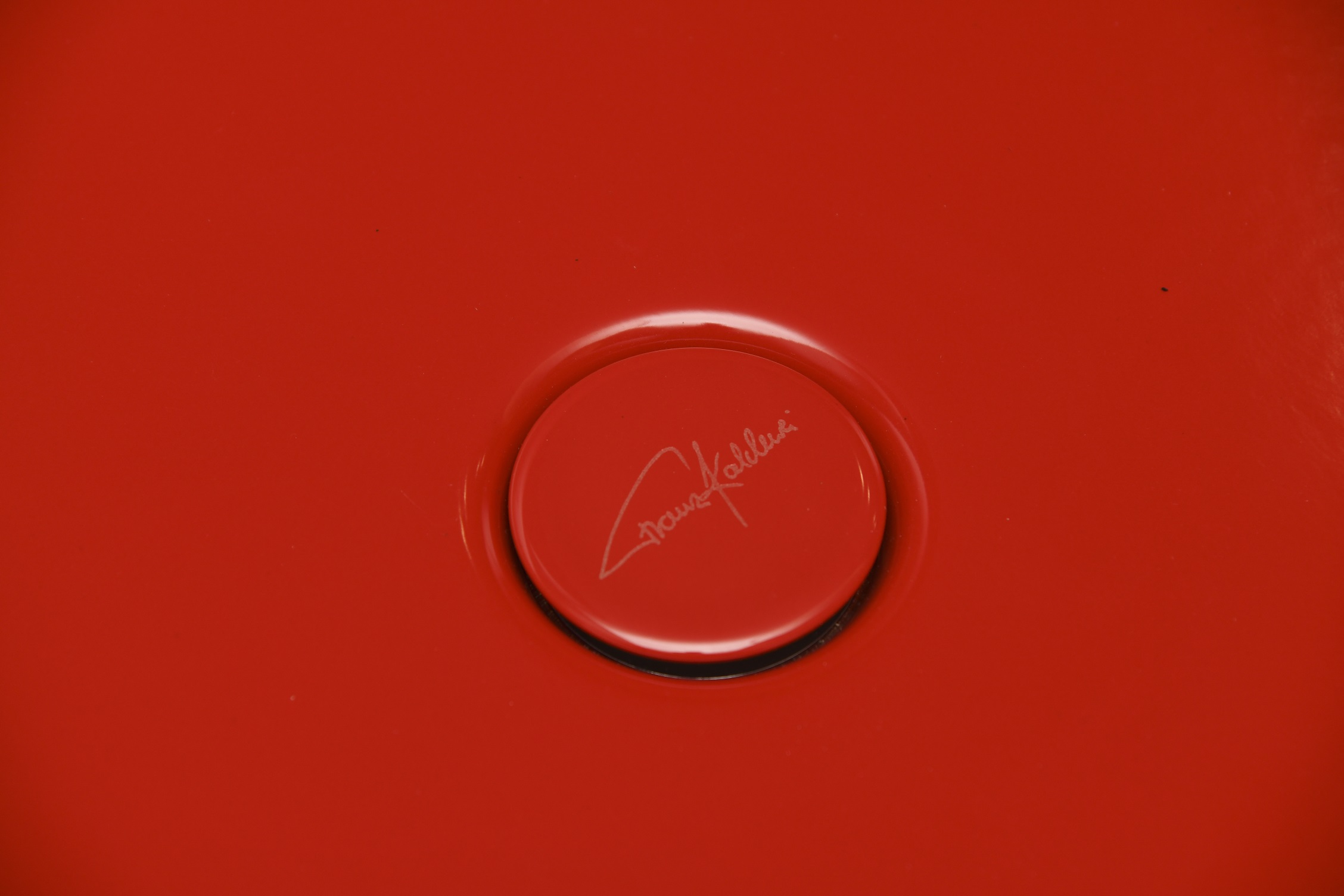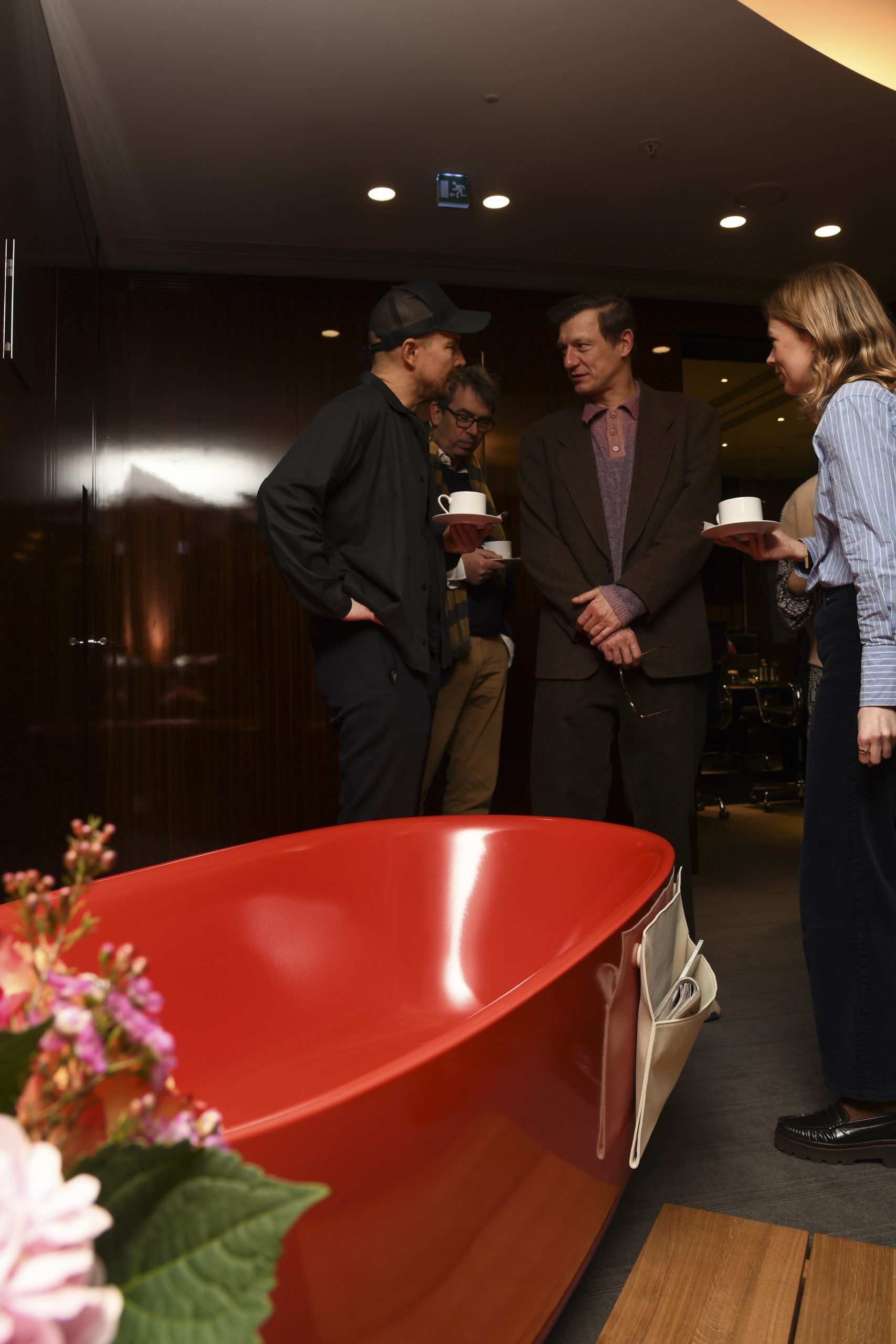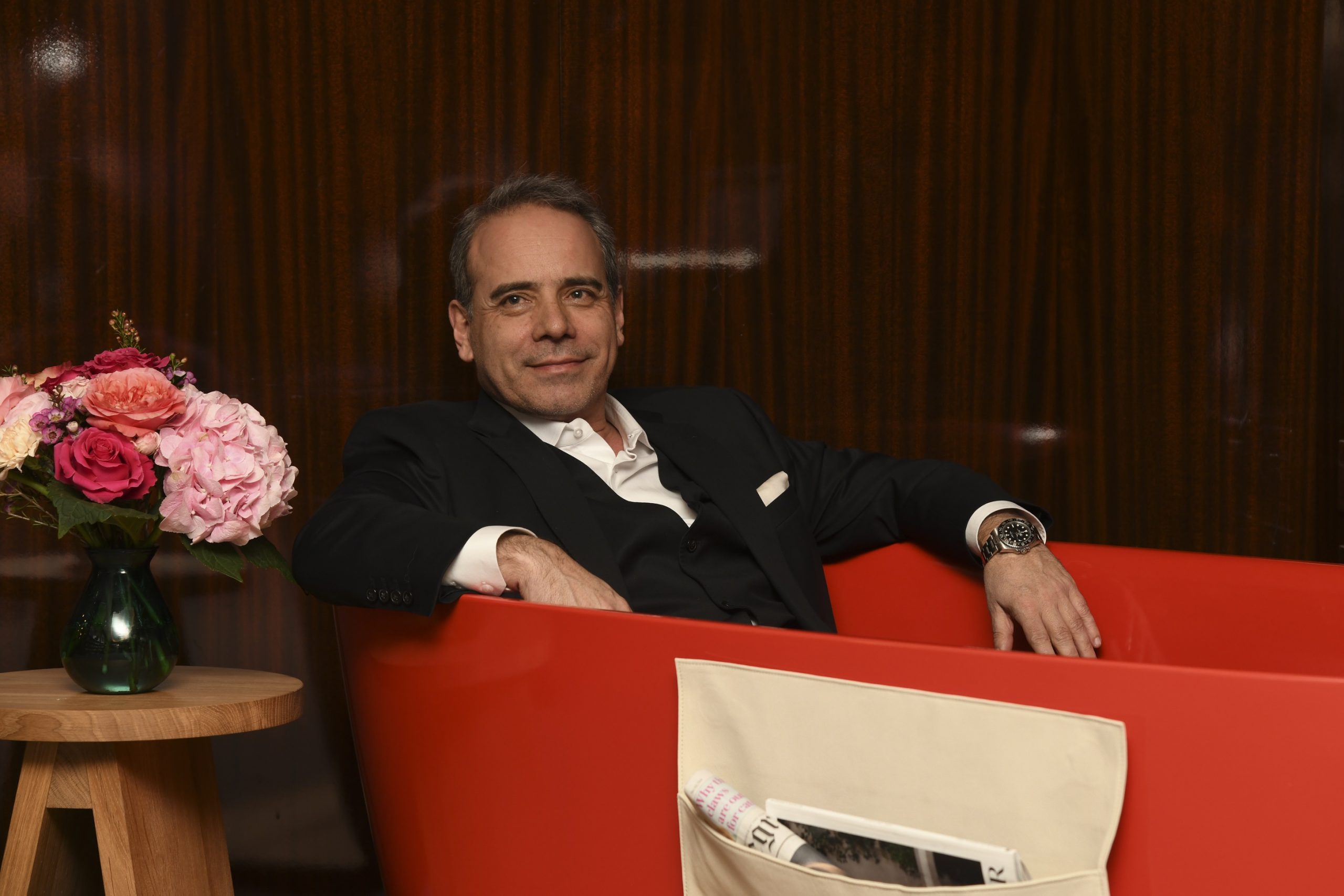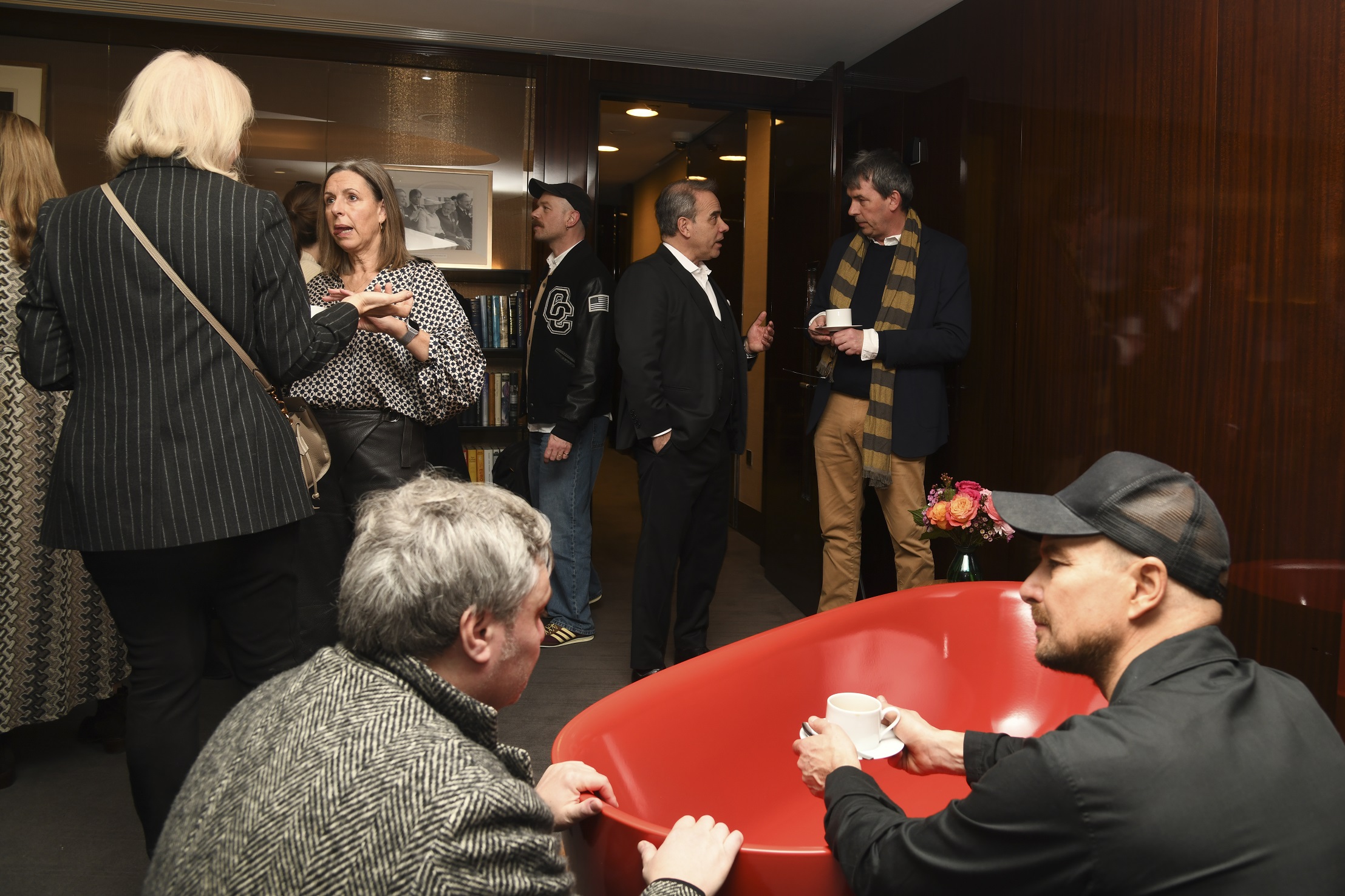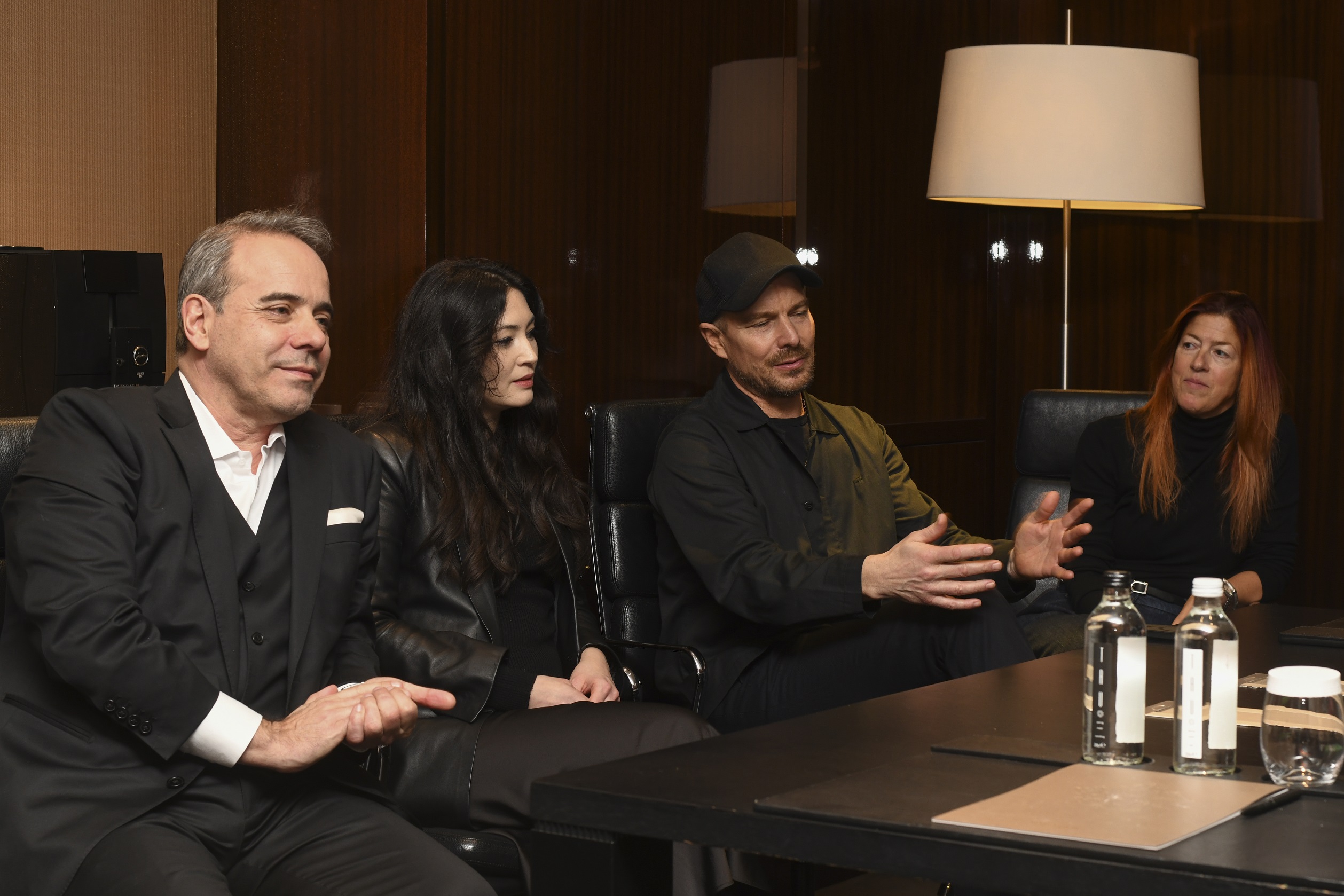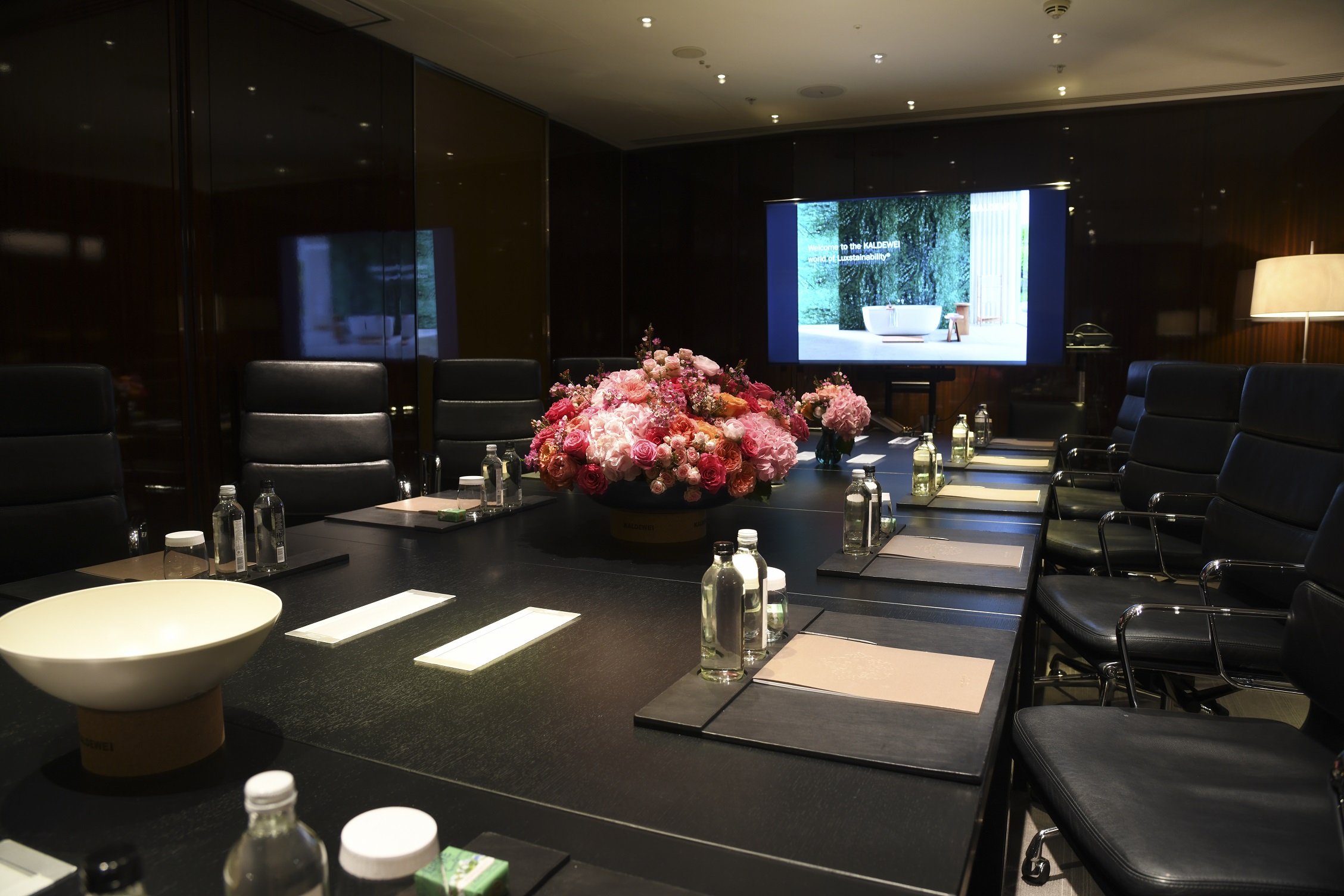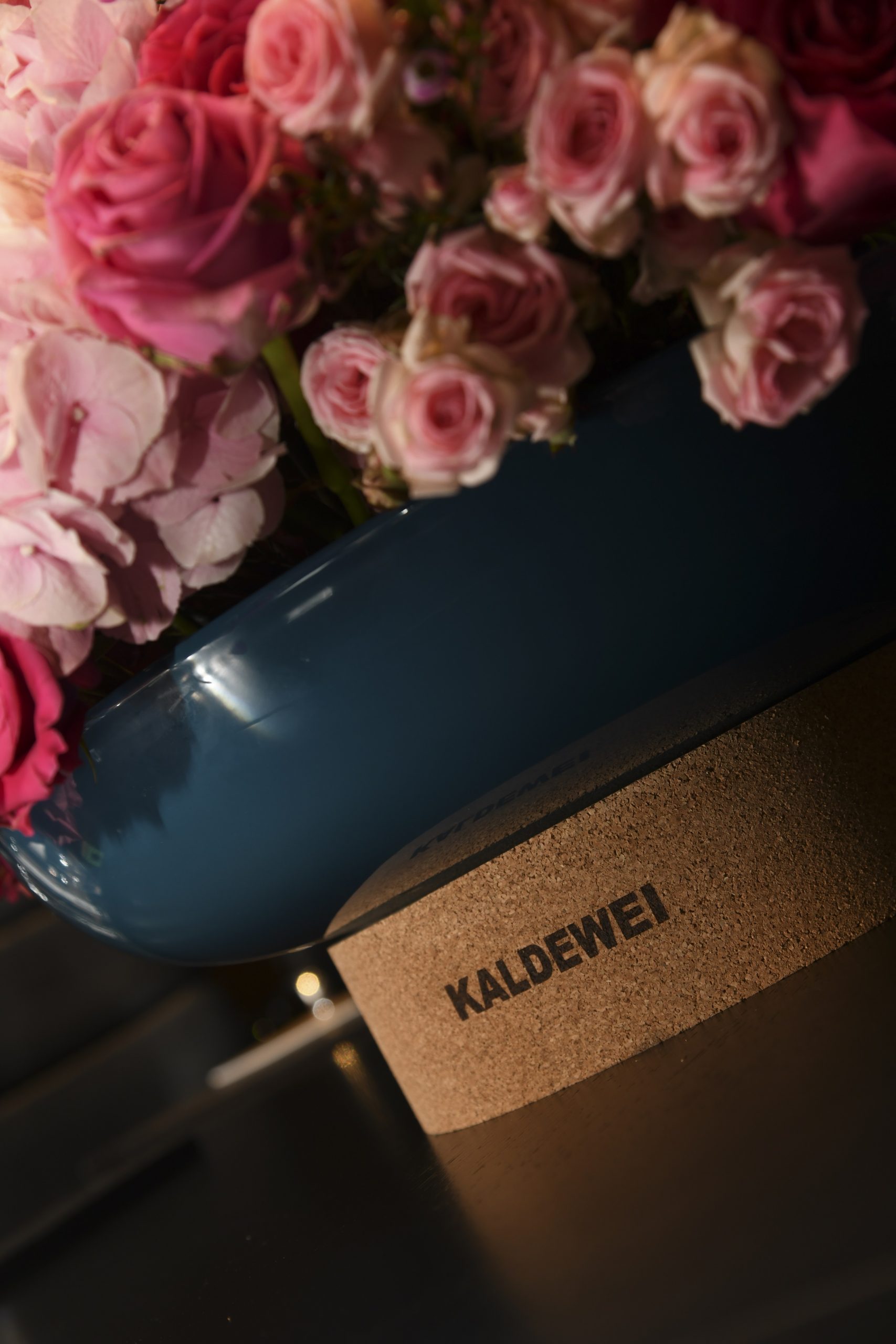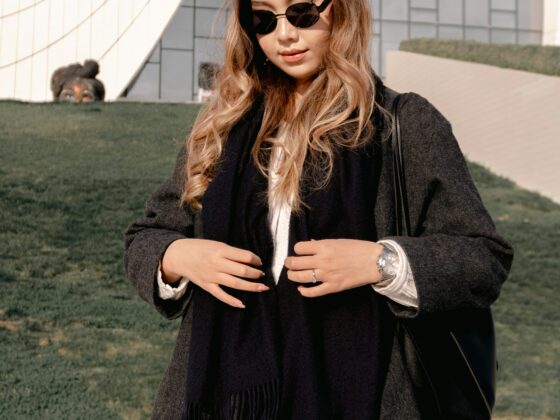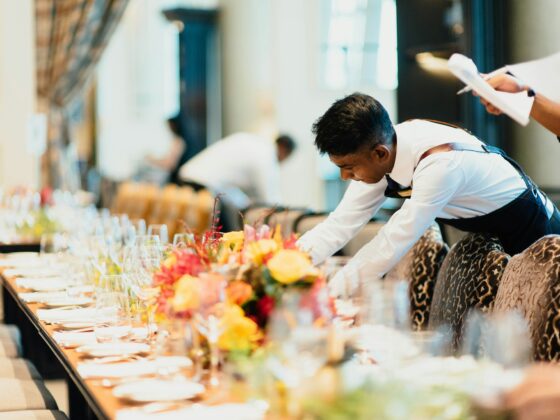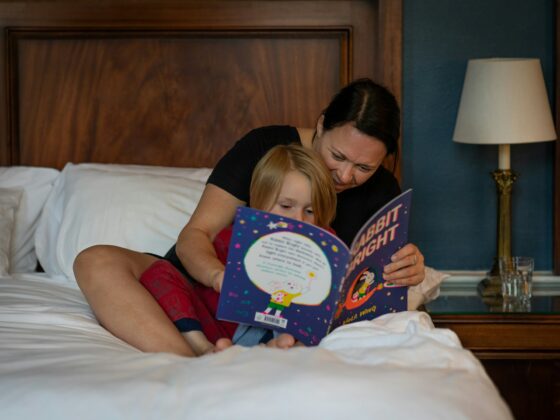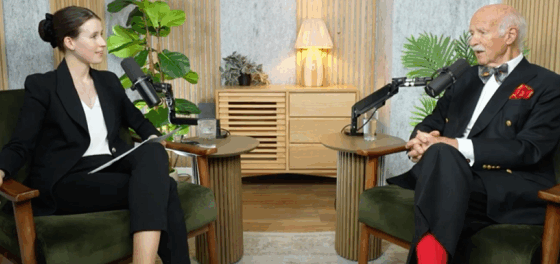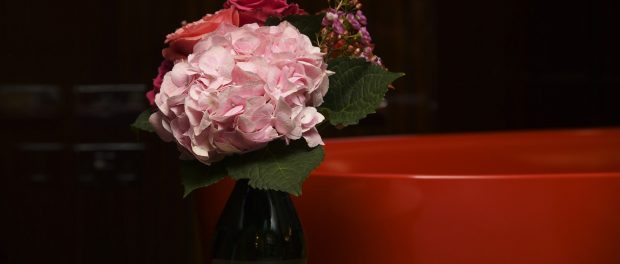
The mention of luxury suggests elegance and opulence, maybe even a little extravagance, but one thought that does not immediately spring to mind is sustainability.
KALDEWEI coined the phrase “Luxstainability™” to describe how luxury and sustainability work together. At a panel discussion held at the Bulgari Hotel in Knightsbridge London on the 5th February a team of interior designers, designers and sustainability experts discussed how the this combination is evolving. How they are working to incorporate eco-friendly solutions into high end interiors, highlighting innovative materials, the circular economy and new technologies.
The panel was compared by Carole Annett – Interiors Editor at Country & Town House, and included: Roberto Martinez from Kaldewei, designer Stefan Diez, Positive Luxury CEO Amy Nelson-Bennett and Siobhan Kelly, Associate Director David Collins Studio.
The Bulgari Hotel was a key location as 15 years ago they selected Kaldewei’s sustainable steel enamel bathtubs for all their room, these tubs have now been physically in place for over 13 years – without receiving one single scratch. This was perfectly demonstrated as prior to the discussion there was a tour of the bathrooms.
The elegant white tub was in direct contrast to the bold orange ‘Golden Sun’ freestanding OYO DUO bath that greeted guests as they entered the lobby. The latest design by Stefan Diez for Kaldewei is 100% recyclable and crafted to hold less water. Stefan is a key advocate of the circular economy and feels that brands who support sustainability need to truly understand what it entails.
This was one of the reasons he was keen to work with Kaldewei as a fourth-generation family-owned manufacturer they know their products and are fully aware of the materials used. When discussion regarding the creation of a new bathtub started Stefan presented Kaldewei with a single drawing and explained the concept, it was so in line with their thinking that they immediately started working together to create the OYO DUO bath.
Members of the panel were all asked how their luxury clients responded to the concept of sustainable design and how early in the process this was introduced.
“When designing a product, creating a building or undertaking a refurbishment, you need to have the right attitude at the start of the process” said Amy Nelson-Bennett.
“At David Collins we start this discussion as soon as we get the request for the proposal stage, so setting out the framework early on” said Siobhan Kelly, “frequently the onus is put on the design team as to how this may be delivered; in general people love a story, a journey so an accreditation or a certification mark helps tell the tale.”
How do you ensure that the luxury products you manufacture are ethically sourced and how have you altered your manufacturing procedures to reduce your environmental footprint?
Roberto Martinez: “As we evolve so does our manufacturing process, the Kaldewei factory has been in the centre of the town for over 100 years, until only a few years ago the Kaldewei family also lived on site. My office was actually ‘grandmas’ bedroom’ although the furniture and curtains have changed you can see the connection, the family were living in the same conditions as their workers, so long before the issue of climate change, we have altered and adapted our processes for the benefit of all, for example reducing pollution. To keep track of the changes Kaldewei provide EPD’s Environmental Product Declarations so we can track the environmental footprint and impact of each and every product we have manufactured since 2009.”
We are here in a luxury hotel, and we all know that the designs created in these environments filter down to the general consumer, this takes time but when that design vision has saturated the market it often leads to a re-design and refurbishment. How do you suggest the waste is managed and how would you encourage recycling or repurposing of materials when this happens?
Roberto: “When I spoke of EPD’s it was in relation to Kaldewei but to make significant and comparable changes you must have a level playing field, allowing you to see where alterations and adaptations need to be made, i.e. you need third party approval. In 2021 Kaldewei signed up to the Paris Agreement, which uses scienced based targets to allow us to measure our environmental impact and help identify the areas that need to be improved. A key example was manufacturing with steel which has a huge impact, so we made changes and now Kaldewei uses Bluemint a form of green steel.”
Stefan Diez: “All manufacturers from upholstery to sanitaryware need to lower their carbon footprint, we have only 25 years to get to net zero. The EU has formulated a set of goals for each sector, designed to drive the progress and this will need to be registered. Manufacturers and brands that don’t comply with this will end up going out of business.”
“The cradle-to-cradle concept is part of this process, knowledge and education are imperative especially when it comes to where you and your suppliers source their products. My team has spent the last 12 years looking at where the products we work with are sourced, not only the material, but the carbon footprint, how it is processed and what happens at the end of the life cycle. In this way Kaldewei is unique, approximately two thirds of the product is sourced in Germany, just under a third from Europe whilst approximately 1% comes from elsewhere in the world and it is fully circular, the end product can be recycled back to steel and used to create another without any loss of quality.”
You all work in the luxury sector, can you explain a little about how you would measure the lifecycle impact of the materials used, including production, use, and disposal?
Amy “We know that luxury consumers are interested in this, approximately 70% do research, ask questions, and want to know where their products come from. They want to know how it has been created and how it can be disposed of, but this information needs to be freely available. The business that are ahead of the curve in this respect, the ones that can readily provide their clients with access to credible information are those that are already leading the way. At Positive Luxury we use the Butterfly Mark as a tool, an accreditation to show that a product has undergone a rigorous process to demonstrate its true eco credentials.”
Siobhan “Credibility is key, but it needs to work hand in hand with education, there is a fine line between the client’s vision and their approach to sustainability and low carbon spend. Which is why something like the Butterfly Mark from Positive Luxury is a good starting point when explaining this to them.”
Do clients ask about sustainable products, or do you educate them about the long-term value of sustainable design choices, both in terms of cost savings and environmental impact?
Siobhan: “We are at a crossroads in design; we are moving away from a focus on hygiene and high tech turning the gaze onto well-designed products, creatively sourced and built to last. We also show how by-products, even items considered to be waste can be re-imagined, for example on a recent project we worked with local artisans who created table lamps from corn husks.”
Amy: “Think of this as a case of follow the leader. The industry depends on designers – they are at the forefront of designing and defining new luxury. And it is in the interest of the luxury market to define quality and encourage innovation, creating products and respecting the materials used. High-volume, low-quality brands will not be making these changes until they must, but the high-end luxury market will. Providing well made, well designed, and well thought out products that are not destined for land fill.”
What innovative technologies or design trends are you excited about that have the potential to further enhance sustainability in interior design?
Roberto: “For the cradle-to-cradle option to work, in any project the products used require a passport, and platforms such as Madaster are vital. By simply registering a product at the beginning of the project it can be followed the whole way through its life cycle – in this way sustainability and digitalisation go hand in hand.”
Stefan: “We need to look at the products that are used to build, historically we used to build houses from stone, and these could then be re-used, whereas the bricks of today are held together by cement and can’t be reused. We need to look at the raw materials, for example just because a table is currently made of virgin wood that doesn’t mean it always has to be – it could be made of grass. It is the perfect time to re-invent the surface.”
In conclusion – We all know that sustainable design is key to our future and high quality, well crafted, exquisitely designed, luxury products are not an entirely new concept – in the past we may have considered them to be heirlooms, items to be passed onto the next generation. It is time to re-think the need for frequent change and the instant gratification of online shopping with next day delivery and look to the future deciding what we would like to leave as our heirloom to the next generation.
Panellists
Compared by Carole Annett – Interiors Editor at Country & Town House, and host of The House Guest podcast.
Representing Kaldewei: Roberto Martinez – with over 30 years of global business experience. His passion for innovation, sustainability, and his desire to collaborate with global leaders in Architecture, Design and Hospitality, fuels his drive to create a meaningful and lasting impact. Roberto brings Kaldewei’s vision of “LUXSTAINABILITY®” to life—blending the elegance of luxury with the responsibility of sustainability.
Stefan Diez – Designer of the stunning and very sustainable OYO DUO bathtub; based in Munich, Stefan creates products for the circular economy. Since founding his studio
DIEZ OFFICE in 2002, he has been at the forefront of transforming the ways in which contemporary products are developed and manufactured and has created a set of principles that outline how commercially successful products can be both environmentally and socially responsible.
Amy Nelson-Bennett – Positive Luxury CEO Amy is a passionate advocate for sustainability and social issues. Positive Luxury are the leading sustainability experts for the global luxury industry. Since 2011, they have only worked within the luxury sector and envision a future where the core principles of luxury and sustainability are fully and genuinely symbiotic.
Siobhan Kelly Associate Director, David Collins Studio and holder of a Butterfly Mark Certification from Positive Luxury. Sustainability plays a key role at the studio combining beauty with functionality and operational efficiency, they aim to create designs that are environmentally conscious. They partner with clients and suppliers who share their commitment to continually improving sustainable credentials and reducing our environmental impact.
Further information: www.kaldewei.com
